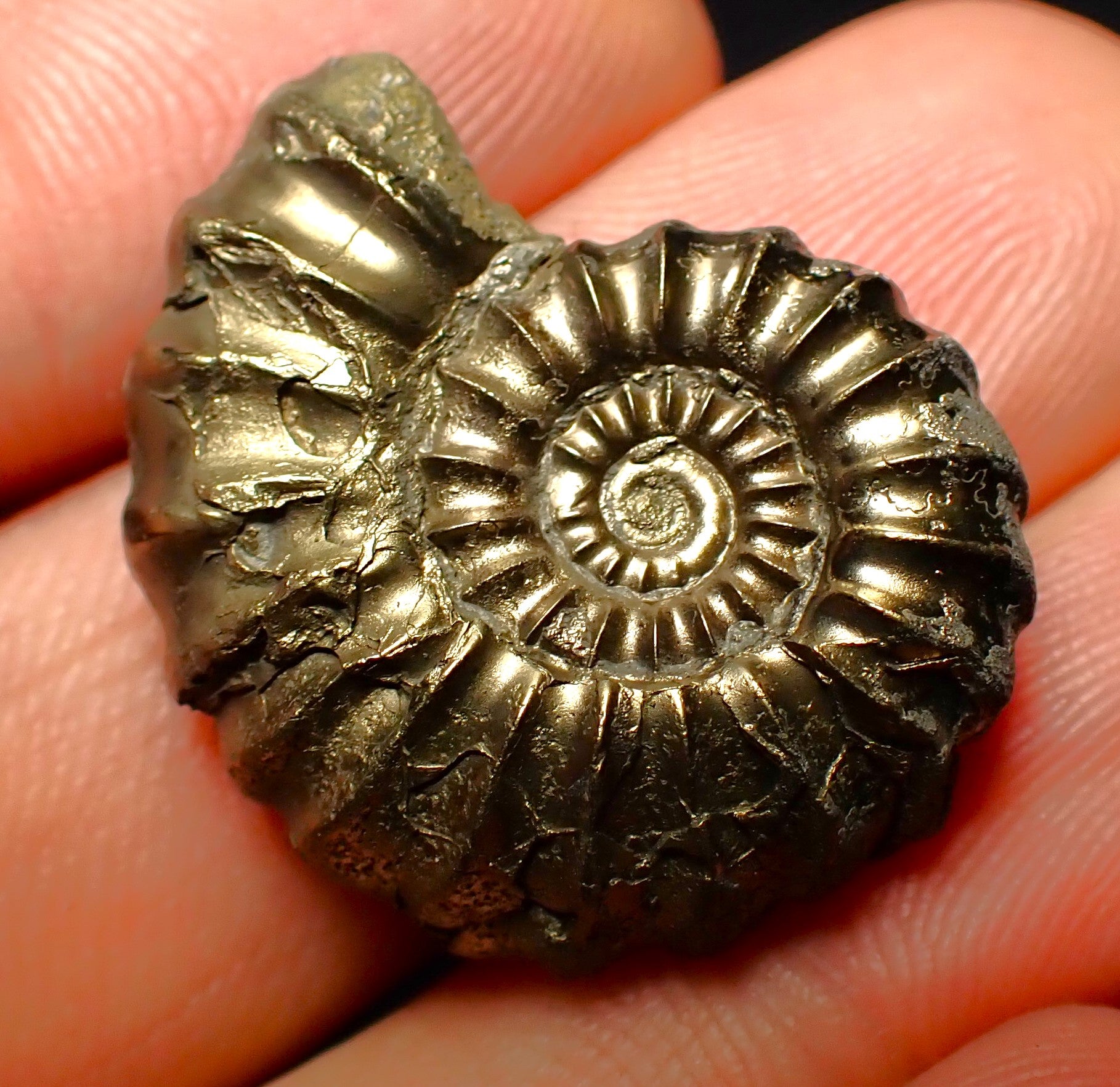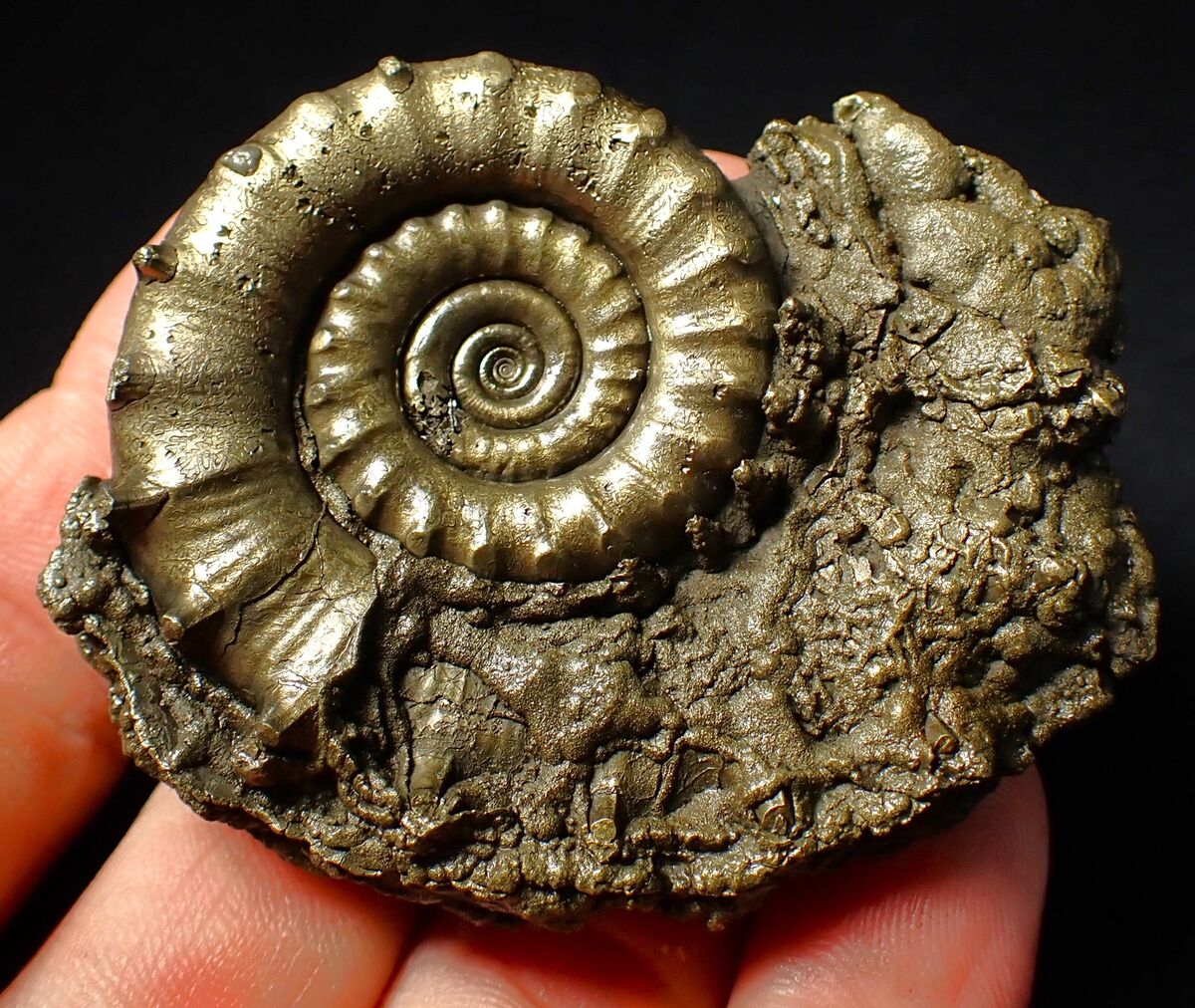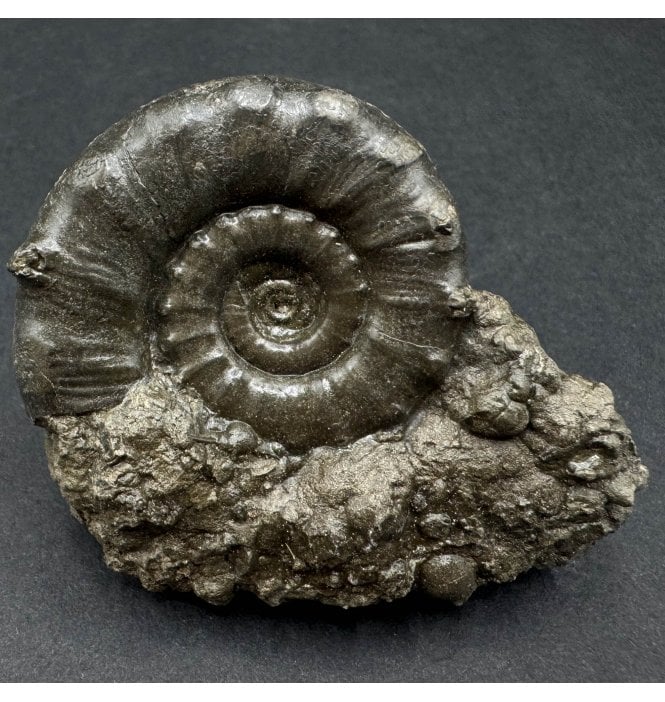The Jurassic Coast in Dorset, England, is a treasure trove of natural history, spanning 185 million years of Earth’s geological evolution. Among the fascinating discoveries from this UNESCO World Heritage Site are pyrite ammonites, ancient marine fossils preserved in a metallic sheen that captivates scientists and collectors alike. This article explores the origins, significance, and unique appeal of these golden fossils.
What Is a Pyrite Ammonite?
Ammonites are extinct marine mollusks that thrived during the Mesozoic Era, particularly in the Jurassic and Cretaceous periods. Characterized by their coiled shells, they were prolific swimmers in the ancient seas. Pyrite ammonites are a rare variation of these fossils, preserved through the process of pyritization.

The Process of Pyritization
Pyritization occurs under specific geological conditions: The ammonite becomes buried in sediment under oxygen-poor conditions, slowing decay. Over time, minerals such as iron sulfide (pyrite) replace the organic material of the shell. This process leaves behind a metallic fossil with intricate details preserved in stunning golden hues.
The result is a visually striking fossil that appears as though it were crafted from gold, though its composition is entirely natural.

The Jurassic Coast: A Fossil Hunter’s Paradise
Stretching 95 miles along England’s southern coastline, the Jurassic Coast is a haven for fossil enthusiasts. Its beaches, including Lyme Regis and Charmouth, are renowned for producing high-quality ammonite fossils.
The Legacy of Mary Anning
The Jurassic Coast is also famous for its connection to Mary Anning, a pioneering 19th-century paleontologist who made groundbreaking discoveries in Lyme Regis. Her work with fossils, including ammonites, helped shape the field of paleontology and brought attention to the rich fossil deposits of the region.
Ethical Fossil Hunting
While fossil hunting is encouraged, visitors are advised to follow ethical practices: Only collect loose fossils from the beach. Avoid hammering cliffs or rocks, which could damage the environment and pose safety hazards. Respect local regulations to ensure the preservation of the site for future generations.

Scientific and Cultural Significance
Scientific Value
Pyrite ammonites offer more than aesthetic appeal; they are valuable tools for scientific research: Index Fossils: Ammonites help geologists date rock layers due to their rapid evolution and widespread presence in marine environments. Insights into Ancient Ecosystems: The study of ammonites reveals details about prehistoric marine biodiversity and the conditions of ancient seas.
Cultural and Aesthetic Appeal
The shimmering golden appearance of pyrite ammonites makes them highly sought after by collectors. Their intricate ribbing and suture patterns showcase nature’s artistry, turning these fossils into natural works of art.
Preserving Earth’s Heritage
The pyrite ammonites of the Jurassic Coast are not just relics of ancient marine life; they are reminders of Earth’s dynamic history. These fossils inspire awe and curiosity, connecting us to a time when dinosaurs roamed the land, and ammonites ruled the seas.
By appreciating and responsibly collecting these fossils, we ensure their legacy continues to educate and inspire future generations.
Conclusion
The pyrite ammonite from the Jurassic Coast is a shining example of nature’s beauty and complexity. Its golden luster is a testament to the intricate processes of fossilization, while its historical and cultural significance underscores the importance of preserving our natural heritage. Whether as a scientific specimen or a collector’s item, the pyrite ammonite is a symbol of the Jurassic Coast’s enduring allure.

